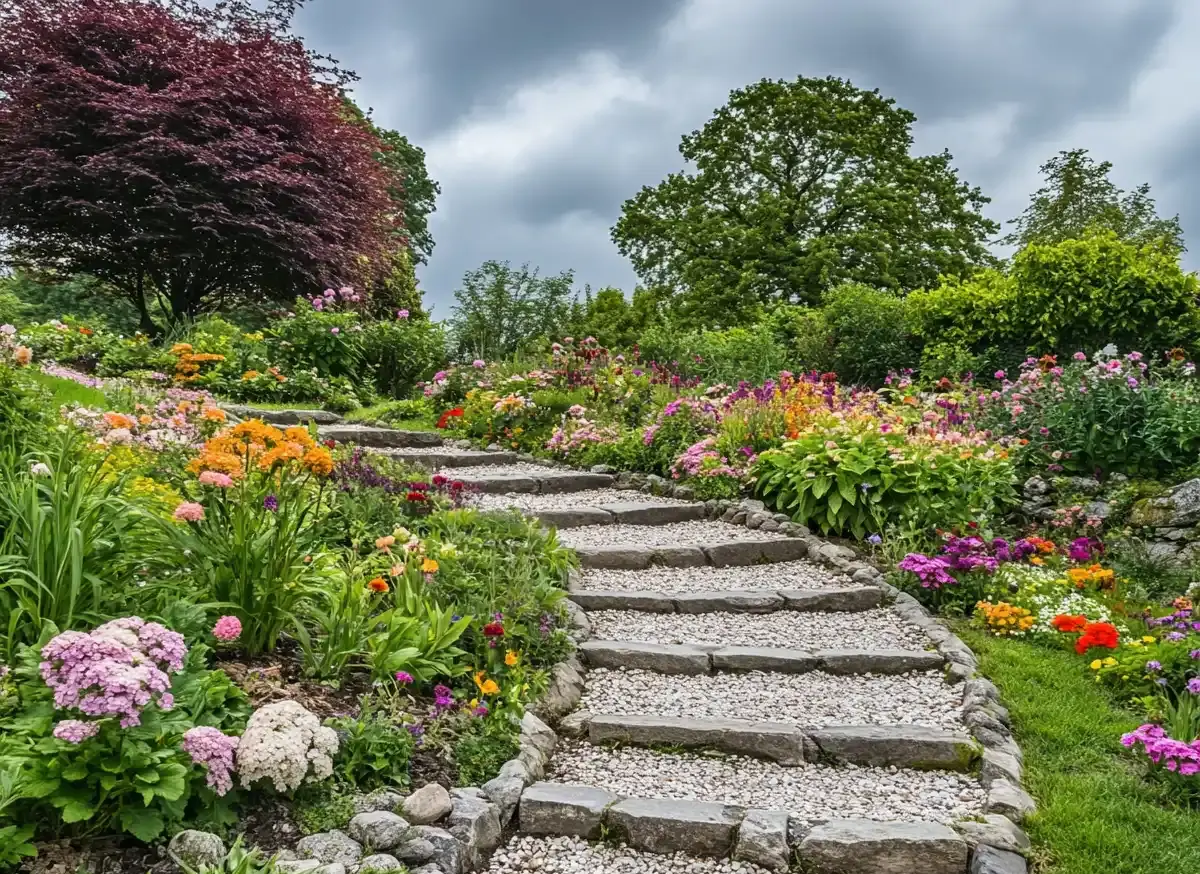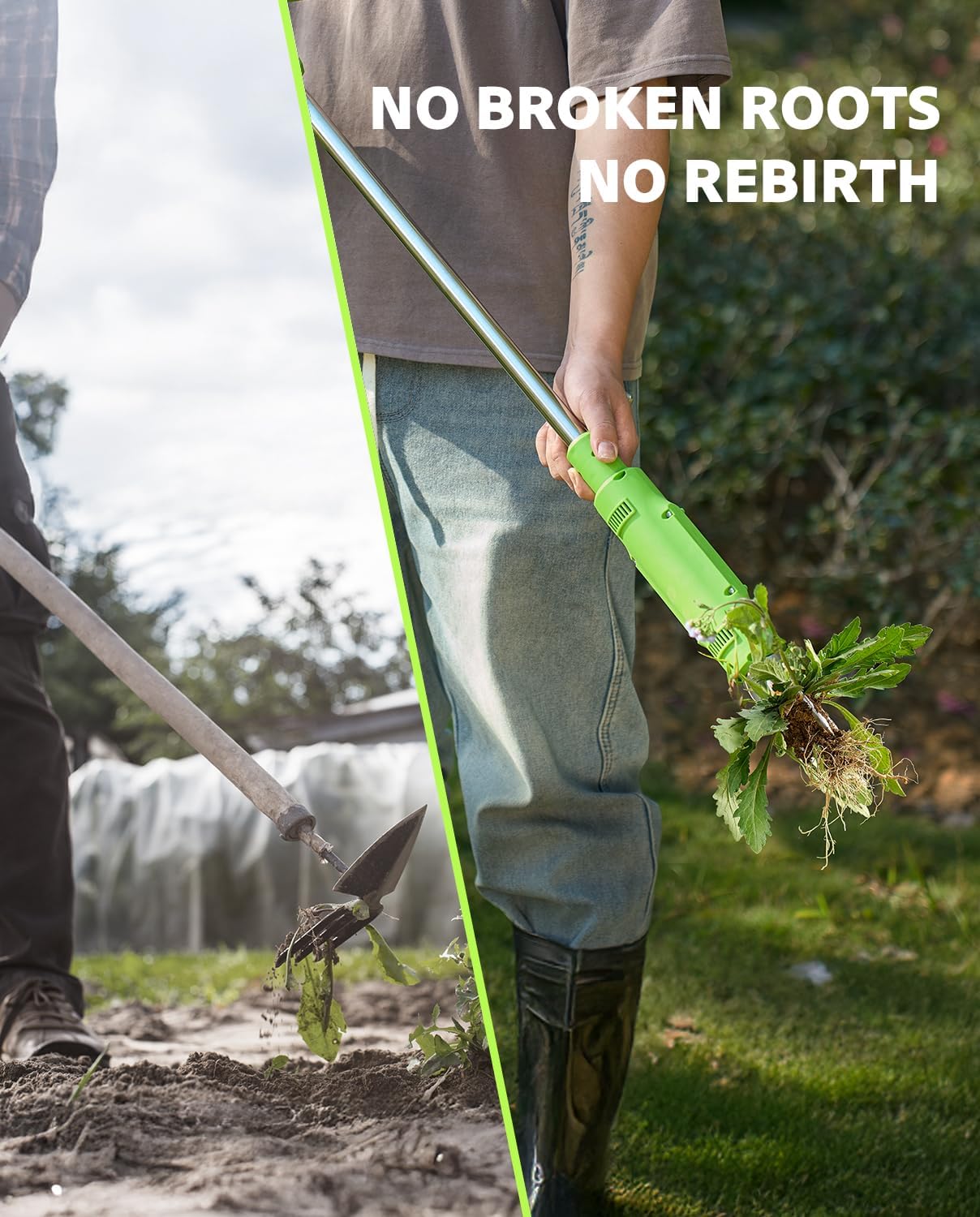Steep hill landscaping can feel intimidating at first, but with the right design approach and a bit of creativity, even the most challenging slopes can be transformed into stunning, functional outdoor spaces. Whether you’re battling erosion, struggling with access, or simply looking to enhance your yard’s aesthetic, there are plenty of affordable landscaping solutions to help you tackle that tricky incline. In this guide, we’ll explore practical and budget-friendly ideas tailored specifically for steep hills—so you can beautify your terrain without draining your wallet.
From using rustic materials like reclaimed wood to integrating low-maintenance plants, and from designing cozy sitting areas to getting creative with planters, these innovative ideas will help you make the most of your slope—while also boosting curb appeal and everyday usability.
Table of Contents
1. Go for a Rustic Look with Reclaimed Wood
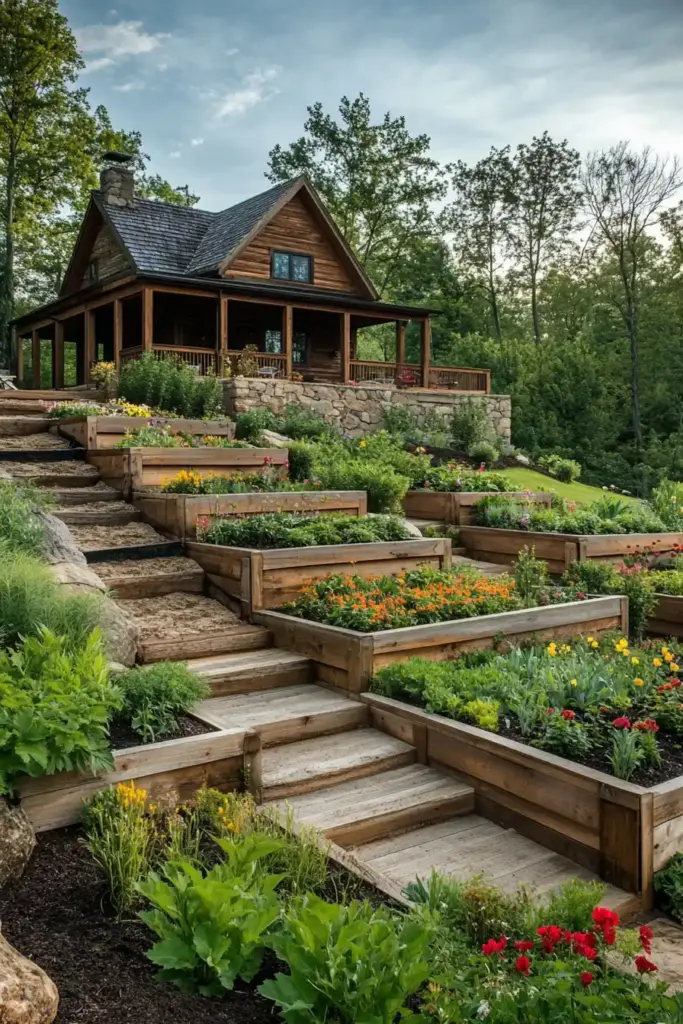
If you’re looking to add natural charm to your steep hill landscaping project without spending a fortune, reclaimed wood is a smart, sustainable option. Whether you’re building steps, terraced retaining walls, or even decorative edging, repurposed wood brings character and warmth to your outdoor space.
A weathered timber stairway can help you navigate sloped terrain safely while complementing the natural surroundings. Retaining walls built from salvaged railroad ties or old barn wood create a grounded, rustic vibe—and using locally sourced or salvaged materials can significantly reduce costs.
Tips to maximize the effect:
- Leave wood untreated for a natural aged look, or apply eco-friendly preservatives for longevity.
- Anchor reclaimed wood steps securely into the slope to prevent shifting.
- Combine with gravel or native plants for added texture and erosion control.
This is a great way to blend functionality and aesthetics while keeping your budget in check.
2. Opt for Layered Planting
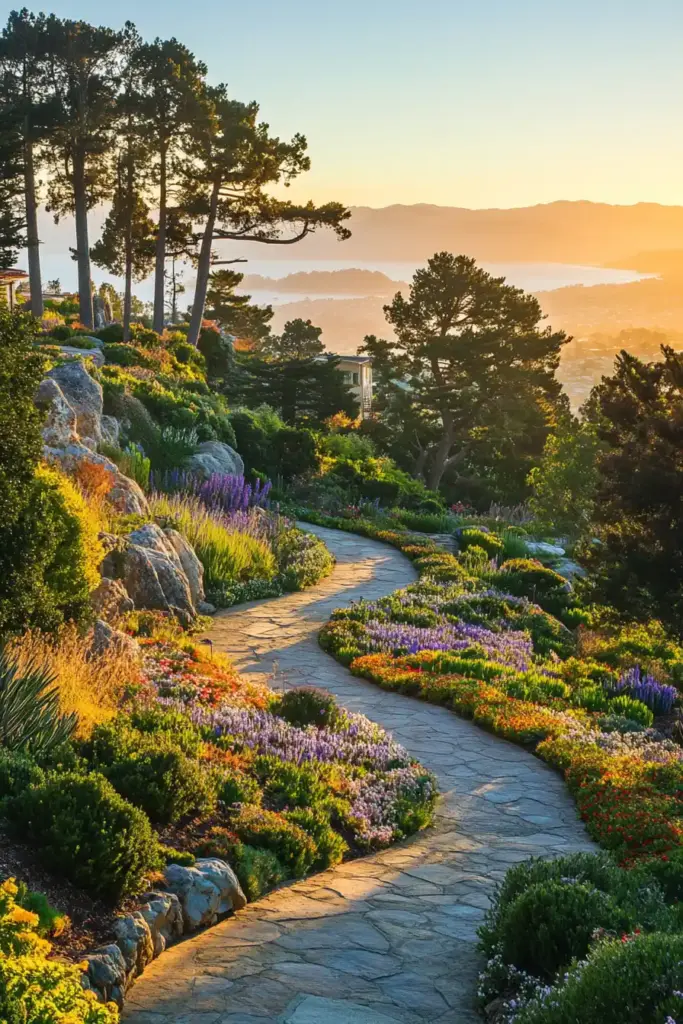
One of the most visually effective techniques in steep hill landscaping is layered planting. By arranging plants in tiers based on height—from tall shrubs or ornamental grasses at the top to creeping groundcovers near the base—you create depth, dimension, and a cohesive flow down the slope.
Layering not only enhances the garden’s visual appeal but also helps stabilize the soil, reducing runoff and erosion. It’s a perfect way to make a sloped yard feel lush and intentional, rather than chaotic or overgrown.
How to get the look:
- Start with structural plants like dwarf evergreens or flowering shrubs at the top.
- Use medium-height plants like lavender, salvia, or ornamental grasses in the mid-layer.
- Finish with spreading groundcovers like creeping thyme, sedum, or ajuga to fill gaps and hold soil in place.
Layering plants with varying bloom times can also ensure continuous color from spring through fall—making your hillside beautiful year-round with minimal effort.
3. Build a Simple Fire Pit
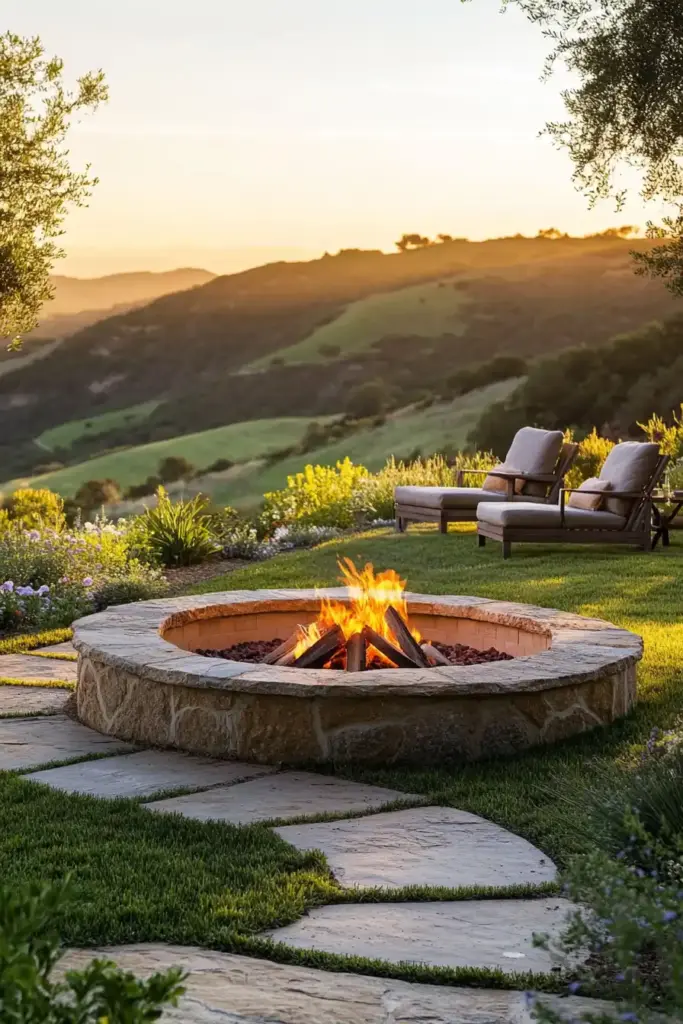
Adding a fire pit is a fantastic way to introduce both warmth and ambiance to your steep hill landscaping design. A small fire feature creates a natural gathering spot for friends and family, extending the use of your outdoor space well into cooler evenings.
Even on a slope, you can build a budget-friendly fire pit by leveling a small terrace area using gravel or stone. Then, construct the pit using affordable materials like stacked pavers, fire bricks, or even a metal ring insert. Surround it with simple seating—think wooden benches, repurposed stumps, or low-cost patio chairs—and you’ve got an inviting hillside retreat.
Fire pit safety & design tips:
- Place the fire pit on a flat, gravel-based surface to improve stability and drainage.
- Make sure the location is clear of overhanging branches or flammable materials.
- Add soft outdoor lighting for both safety and ambiance.
A well-positioned fire pit not only boosts functionality but also becomes a cozy focal point nestled within your hillside landscape.
4. Incorporate Vertical Elements
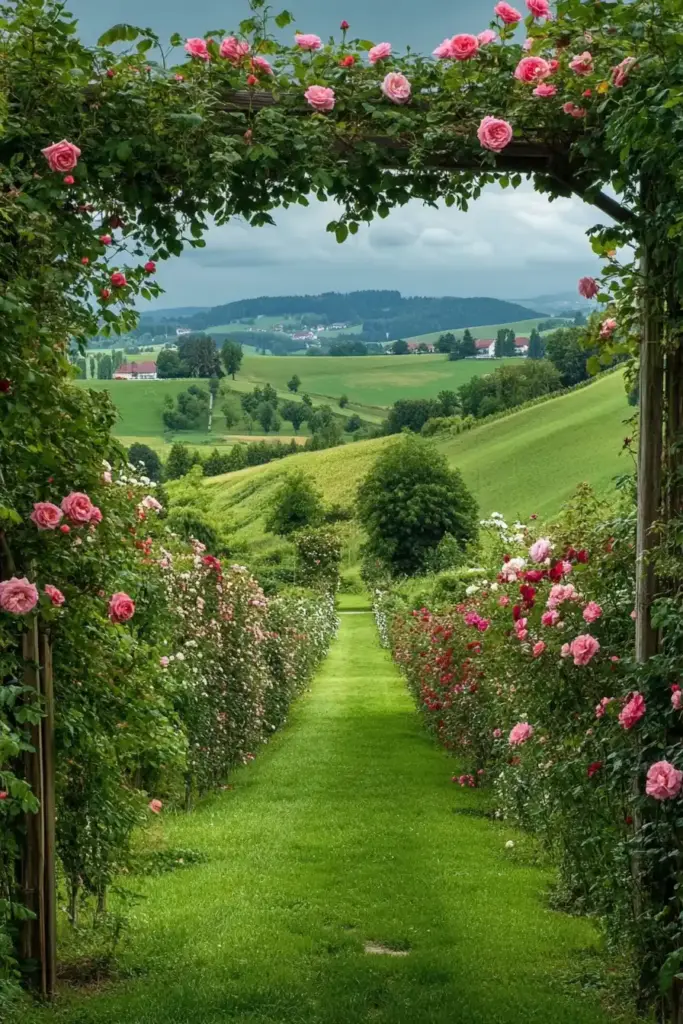
When working with limited ground space on a slope, vertical features are your best friend in steep hill landscaping. Arbors, trellises, and vertical planters draw the eye upward, creating visual interest and breaking up the monotony of a steep incline.
These structures not only add aesthetic appeal but can also serve functional purposes—like providing privacy, supporting climbing plants, or defining different zones within your hillside garden. Best of all, many vertical elements can be built DIY-style using recycled wood or inexpensive metal frames.
Ideas to elevate your slope:
- Install trellises for flowering vines like clematis, honeysuckle, or jasmine.
- Use an arbor to frame a stairway or transition area.
- Try wall-mounted planters or vertical gardens to maximize space.
By adding height and structure to your landscape, vertical elements create a balanced design that feels more layered and intentional—especially important when dealing with elevation changes.
5. Plant a Variety of Colorful Greenery
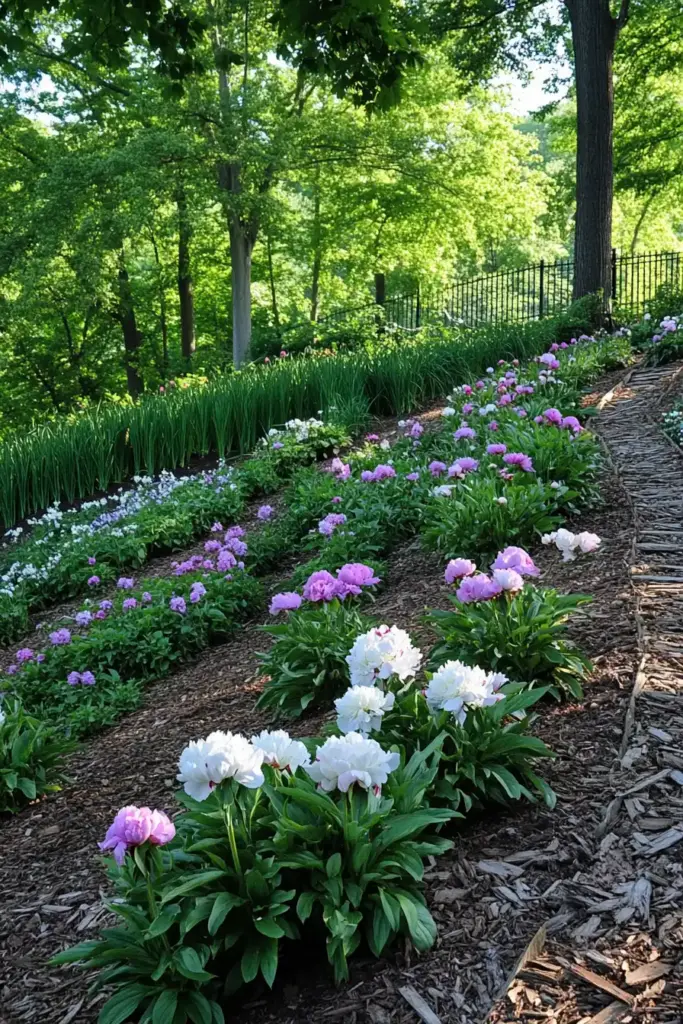
Color plays a huge role in making your steep hill landscaping pop. By planting a diverse mix of colorful perennials, flowering shrubs, and groundcovers, you can create a vibrant hillside that evolves beautifully through the seasons.
Choose plants with different textures, bloom times, and foliage colors to build visual layers that flow naturally down the slope. This variety also helps to reduce bare spots, control erosion, and limit the spread of weeds.
Colorful planting strategies:
- Mix low-maintenance groundcovers like creeping phlox or sedum with taller bloomers like coneflowers or coreopsis.
- Incorporate foliage plants like hostas or heucheras for year-round color.
- Use flowering shrubs such as hydrangeas, azaleas, or spireas for larger bursts of seasonal color.
Opting for native and drought-resistant varieties can also minimize maintenance and watering needs, making your garden not only beautiful but sustainable, too.
6. Use Mulch for Moisture and Weed Control
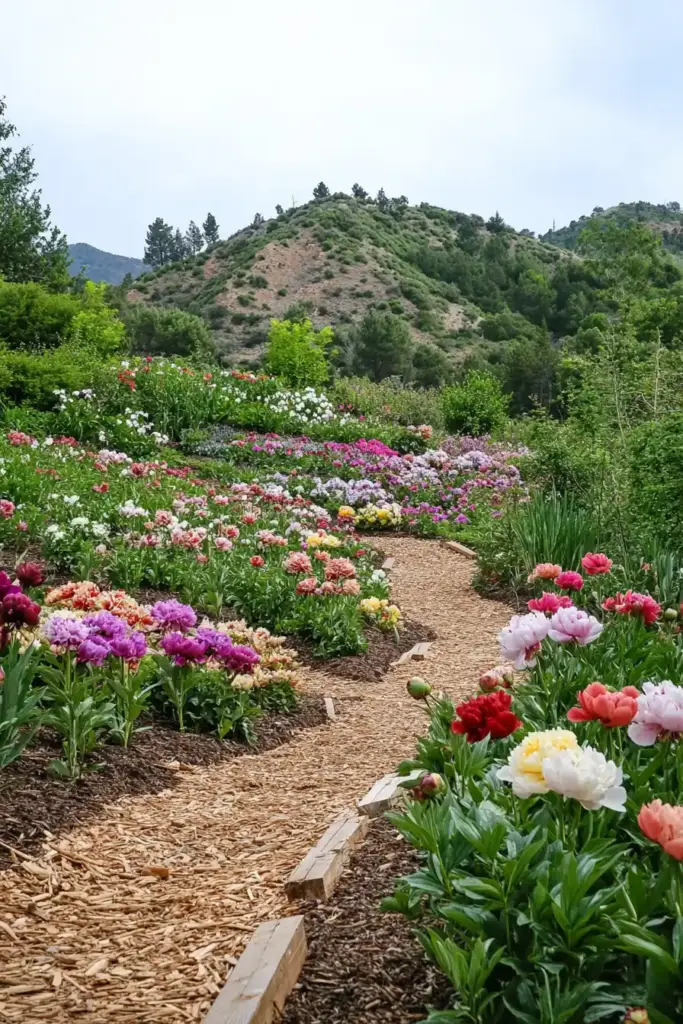
Mulch is one of the simplest yet most effective tools in steep hill landscaping. A well-applied layer of mulch helps retain soil moisture, suppresses weed growth, and protects plant roots from extreme temperatures—all while giving your slope a clean, finished look.
Organic mulches like shredded bark, pine needles, or composted leaves are ideal for sloped areas because they break down over time and improve soil health. For added erosion control, use landscape fabric underneath mulch on steeper sections to keep everything in place during heavy rains.
Smart mulch tips for slopes:
- Apply a 2–3 inch layer to insulate soil and reduce evaporation.
- Avoid piling mulch directly against plant stems to prevent rot.
- Use stone or gravel mulch in areas with poor drainage or around fire features.
Incorporating mulch not only saves time on maintenance but also contributes to the long-term stability and health of your hillside garden.
7. Incorporate Water Features
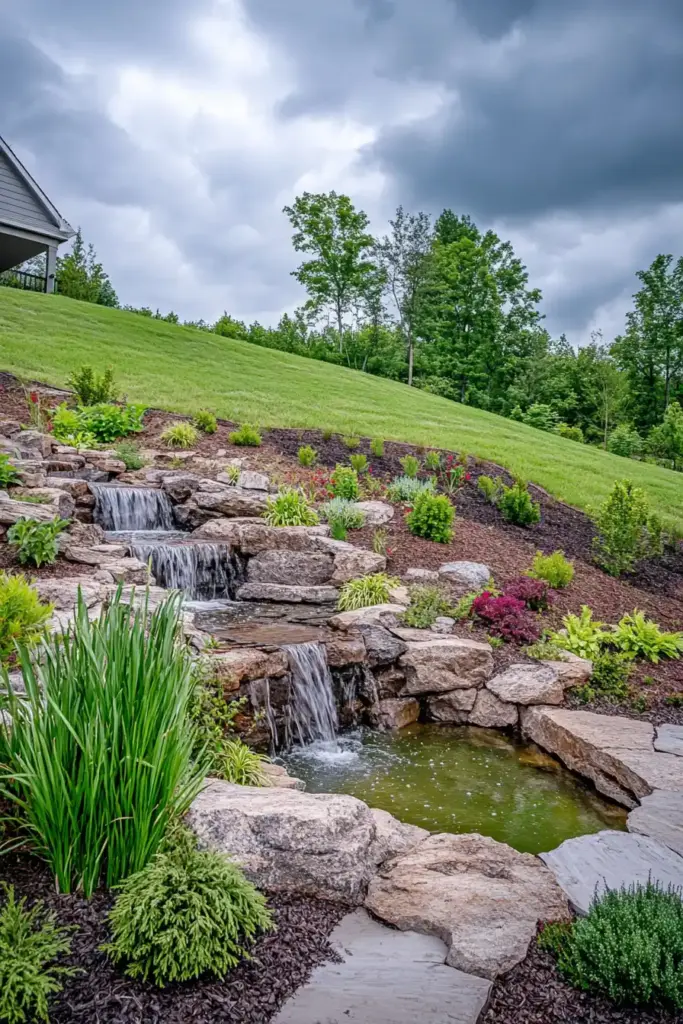
Bringing in water features can elevate your steep hill landscaping from functional to serene. A small pond, cascading waterfall, or even a solar-powered fountain adds movement and tranquility, transforming your slope into a peaceful retreat.
Because gravity works in your favor on a hillside, it’s often easier to create cascading effects that look natural and require less mechanical intervention. Even a simple recirculating pump system can produce the calming sound of trickling water while supporting a more balanced garden ecosystem.
Ideas for slope-friendly water features:
- Build a tiered waterfall using natural stone and a hidden pump system.
- Nestle a small pond into a terraced area with aquatic plants for added biodiversity.
- Use a solar fountain for a low-maintenance, eco-friendly centerpiece.
Water features not only create a visual focal point but also attract birds, butterflies, and beneficial insects—helping your hillside feel alive and connected to nature.
8. Explore Rock Gardens
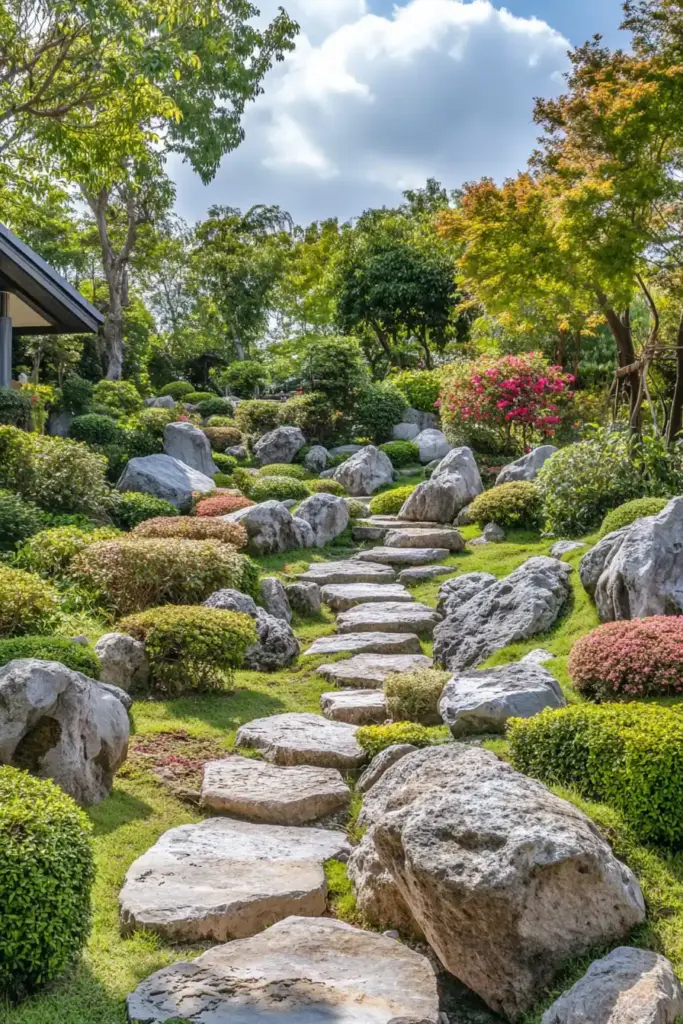
Rock gardens are a natural fit for steep hill landscaping, offering low-maintenance beauty and excellent erosion control. By combining stones of various sizes with drought-tolerant plants, you can craft a hillside that feels grounded, sculptural, and perfectly in tune with its environment.
Rocks help stabilize the soil and provide a striking contrast to greenery. You can layer boulders, gravel, and pebbles to form terraces or define planting zones. Tuck in hardy alpine plants, succulents, or creeping groundcovers between the stones to soften the look and bring in seasonal color.
Tips for building a rock garden on a slope:
- Use local or reclaimed rocks to save money and blend with the landscape.
- Anchor larger stones securely to prevent shifting over time.
- Choose plants that thrive in well-drained soil, like sedum, artemisia, or yarrow.
A thoughtfully designed rock garden adds texture, structure, and timeless appeal—all while requiring minimal watering and upkeep.
9. Use Native Plants for Low Maintenance
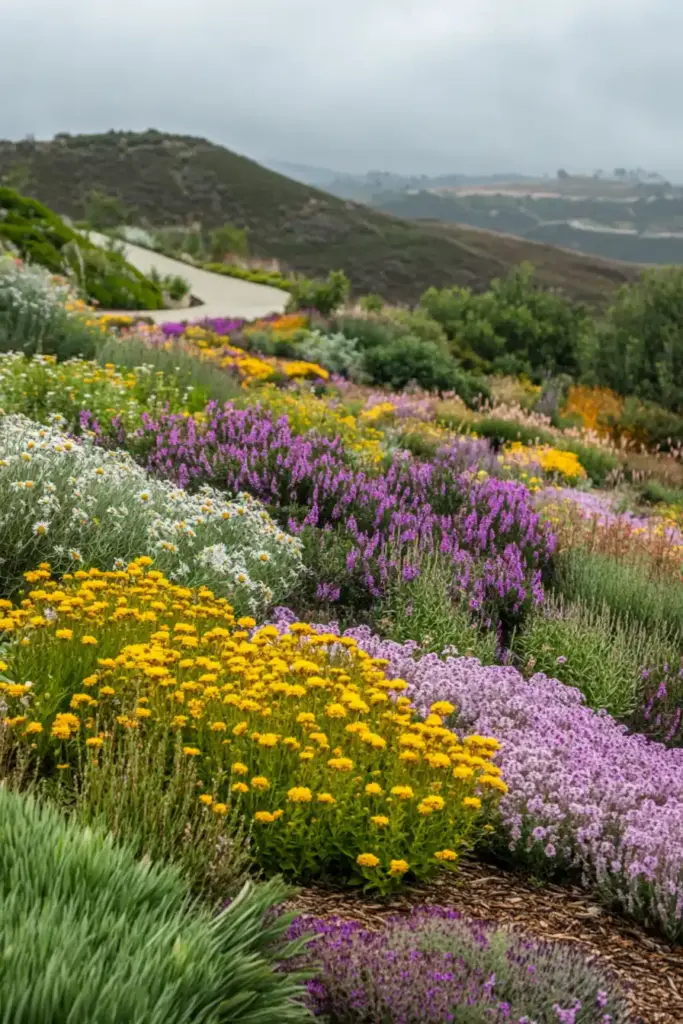
When it comes to steep hill landscaping, native plants are a smart and sustainable choice. Because they’re already adapted to your region’s climate, soil, and rainfall patterns, native species require less water, fertilizer, and maintenance—making them ideal for sloped gardens that can be tricky to access regularly.
In addition to being tough and resilient, native plants often support local wildlife and pollinators, helping your hillside become a haven for bees, butterflies, and birds. Plus, their deep root systems help stabilize soil, reducing erosion and runoff on steep inclines.
Native planting strategies:
- Research plants native to your USDA zone and local microclimate.
- Mix flowering natives like black-eyed Susan, bee balm, or goldenrod with native grasses or ferns for year-round appeal.
- Plant in natural-looking clusters or drifts for a wild, cohesive aesthetic.
Using native plants is a long-term investment in a hillside that practically takes care of itself—and gives back to the environment at the same time.
10. Design Functional Spaces
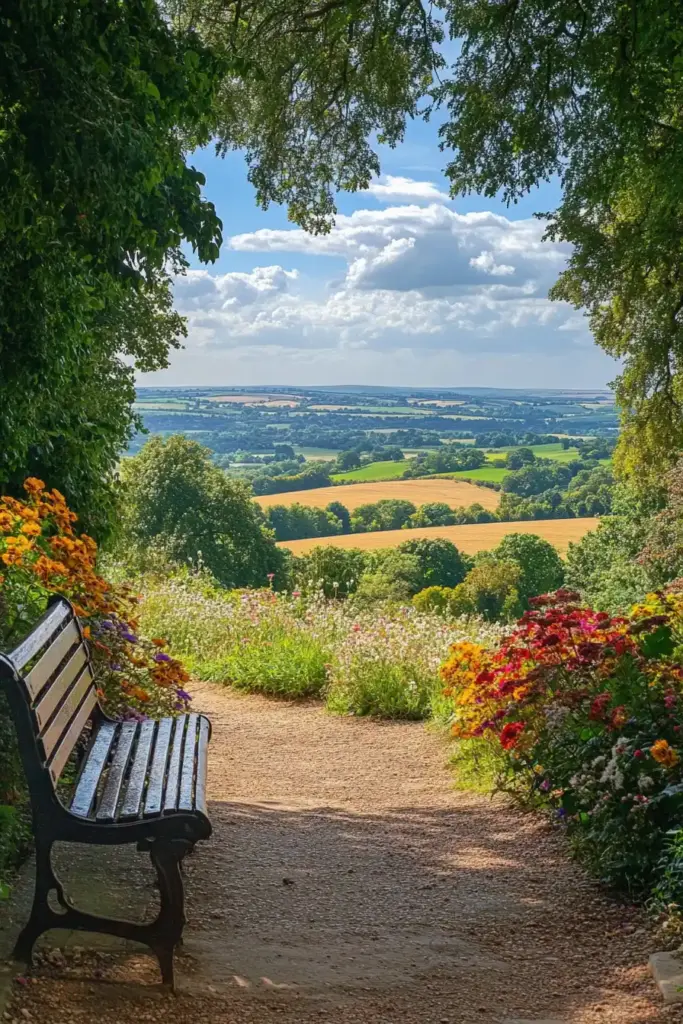
Slopes may seem difficult to work with, but they actually offer great opportunities for creating cozy, tucked-away areas in your steep hill landscaping design. By carving out flat zones or terraces, you can add functional outdoor living spaces—like reading nooks, small patios, or dining spots—without needing a full backyard overhaul.
These built-in “pause points” make your hillside not just beautiful, but usable. Think of it as creating mini destinations as you move up or down the slope.
Functional space ideas for a slope:
- Add a bench surrounded by flowering plants or ornamental grasses for a tranquil retreat.
- Level a small terrace with pavers or gravel for a café-style seating area.
- Incorporate shade elements like pergolas or canopies where the slope faces strong sun.
By blending utility with aesthetics, you turn your hillside into more than just a landscape—it becomes a lived-in, layered extension of your home.
11. Create Pathways and Steps
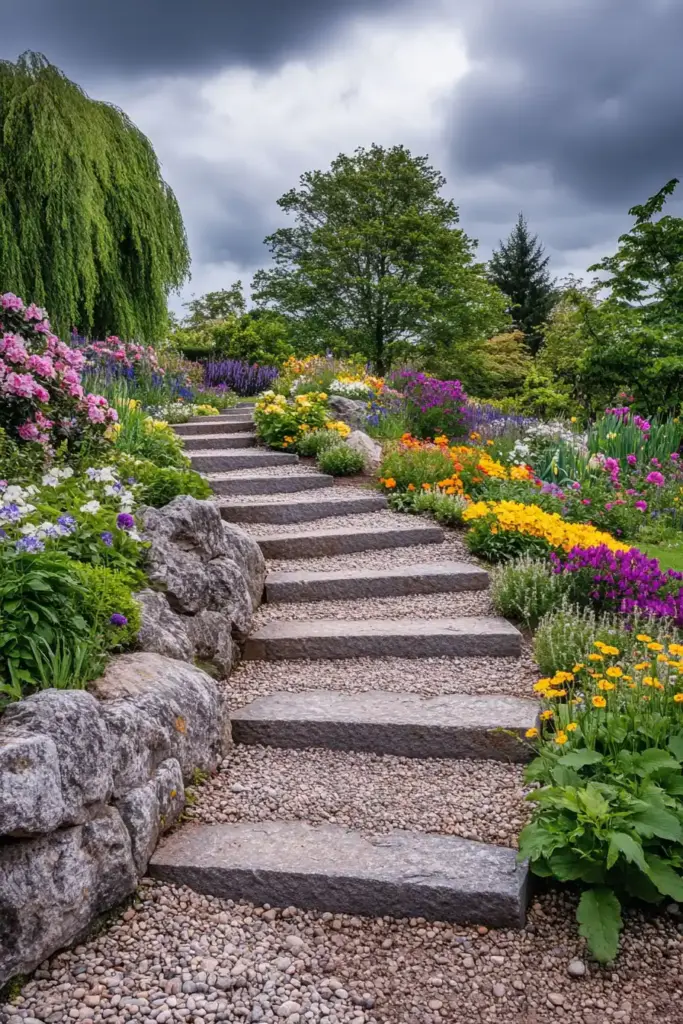
Accessibility is key in any steep hill landscaping project. Without clear paths or steps, even the most beautiful hillside can become impractical or unsafe. The good news is, with a bit of planning, pathways can be both functional and visually striking.
Using materials like gravel, flagstone, or interlocking pavers, you can build pathways that gently meander through your slope, connecting different zones and guiding foot traffic. Adding stone or timber steps between terraces helps navigate elevation changes safely, while also contributing to the overall design aesthetic.
Pathway and step design tips:
- Use landscape fabric beneath gravel or stone to prevent weeds and erosion.
- Install wide, level steps with a gentle rise to ensure comfortable footing.
- Line pathways with solar lights or low-growing plants for added charm and visibility.
Thoughtful pathway placement not only enhances navigation but also draws the eye through your landscape, making your steep hill feel more cohesive and welcoming.
12. Embrace Terracing with Natural Materials
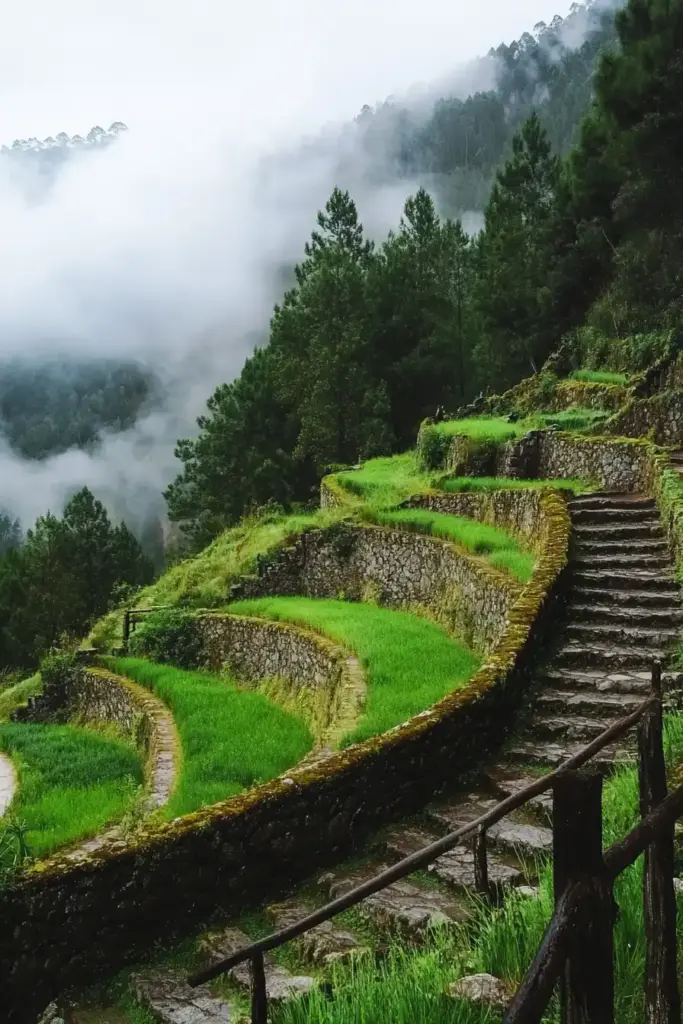
Terracing is one of the most effective techniques for managing steep hill landscaping, especially when erosion or runoff is a concern. By dividing the slope into flat, step-like sections, you create level planting beds, seating areas, or pathways—each with its own purpose and visual appeal.
Instead of using expensive concrete or manufactured retaining systems, you can achieve a more organic, budget-friendly look by using natural materials like logs, reclaimed bricks, or stacked stone. These materials not only blend better with the landscape but are often cheaper or even free if sourced locally.
Natural terracing tips:
- Use large logs or thick timbers as retaining edges for smaller terraces.
- Stack flat rocks or reclaimed bricks to create informal walls.
- Anchor all materials securely to handle shifting soil and weather exposure.
Terracing transforms an unruly slope into a structured and usable garden space, while maintaining the rustic charm of a naturally integrated landscape.
13. Utilize Old Tires for Creative Planters
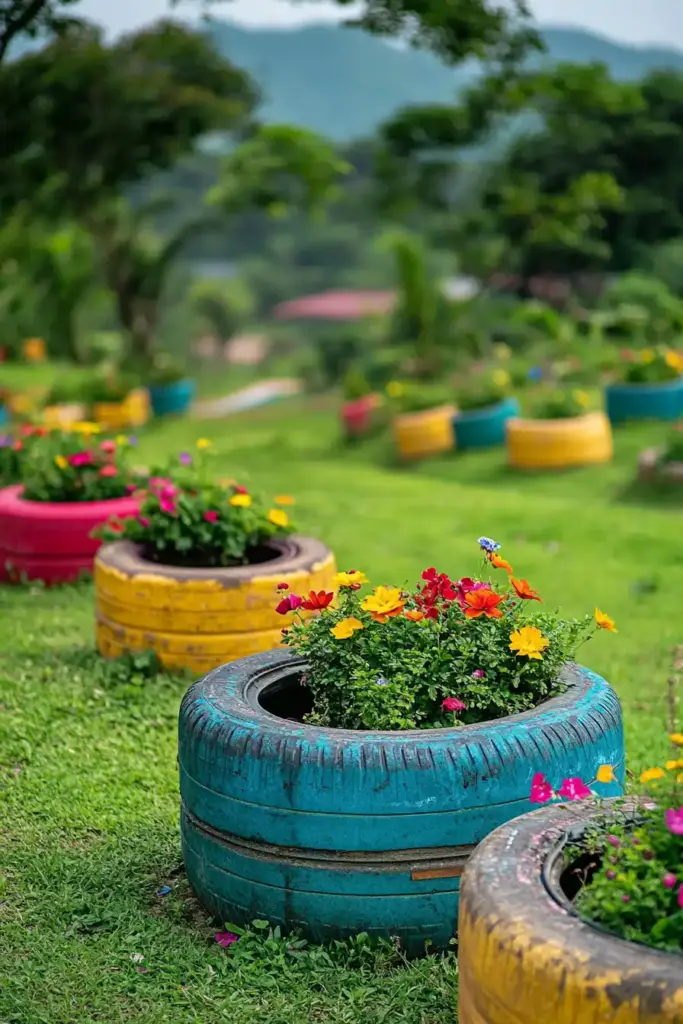
Don’t overlook the power of upcycling when planning your steep hill landscaping. Old tires, often discarded and easy to find, can be transformed into colorful, durable planters that are perfect for sloped terrain. Their sturdy shape helps anchor them into the hillside, and their circular form naturally holds soil in place.
You can paint tires in bold hues for a playful look or keep them natural for a rustic, industrial vibe. Stack them, half-bury them, or mount them vertically to add dimension and creativity to your garden design.
Creative ways to use tires on a slope:
- Paint and stack tires to form tiered herb or flower towers.
- Partially embed tires into the slope to prevent sliding and create visual anchors.
- Use them as edging for sloped paths or terraces filled with plants.
Not only do these planters reduce waste and save money, but they also bring personality and fun to your hillside—especially if you involve kids or community groups in the decorating process.
14. Add a Pop of Color with Flowering Shrubs
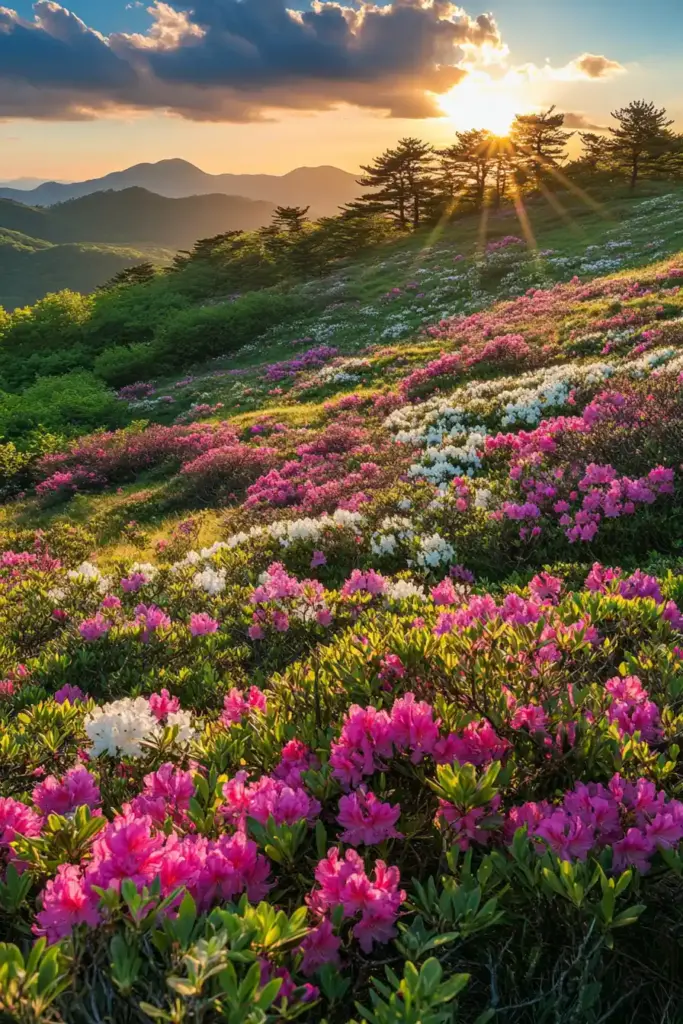
One of the easiest ways to make your steep hill landscaping visually dynamic is by incorporating flowering shrubs. These hardy, low-maintenance plants provide bold splashes of color, seasonal interest, and structural balance to sloped areas.
Flowering shrubs work especially well on hillsides because their deep roots help stabilize soil and prevent erosion. Choose varieties that bloom at different times of the year to maintain color throughout the seasons—while also attracting pollinators like bees, butterflies, and hummingbirds.
Top shrubs for colorful slopes:
- Azaleas & Rhododendrons – Ideal for spring bloom and partial shade.
- Hydrangeas – Offer long-lasting summer color and thrive in terraced beds.
- Spirea & Forsythia – Low-maintenance and vibrant from spring into fall.
To maximize their impact, group flowering shrubs in odd-numbered clusters and space them along terraces or path edges. Their presence softens hardscaping and adds rhythm and movement to your hillside garden.
15. Create a Zen Garden Space
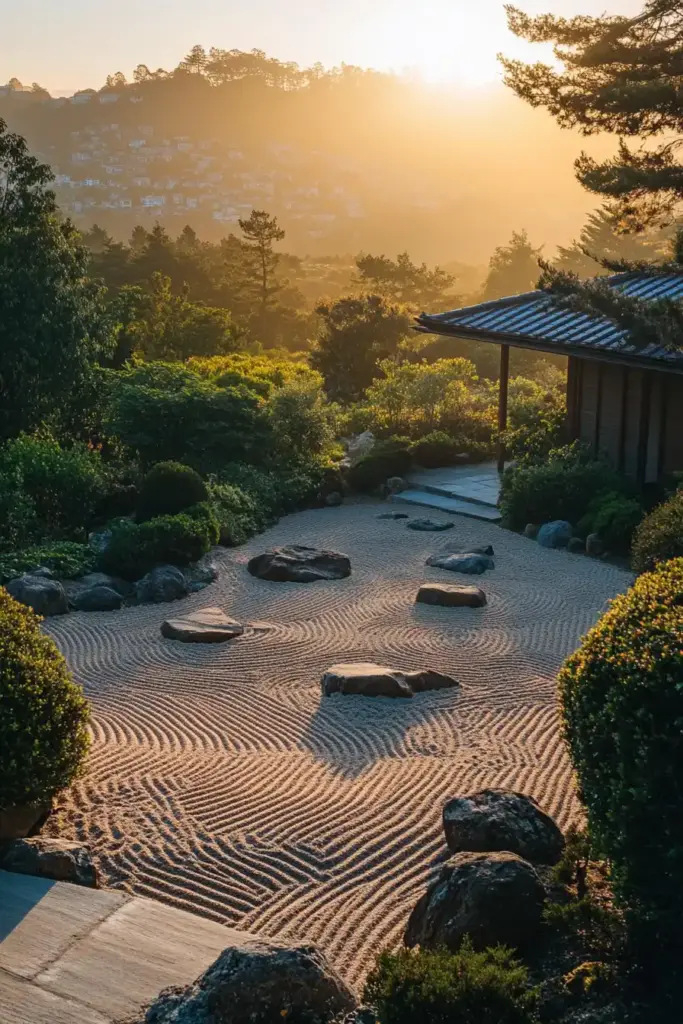
If you’re seeking a peaceful retreat within your steep hill landscaping, a Zen garden might be the perfect solution. These minimalist spaces, rooted in Japanese tradition, focus on simplicity, texture, and natural materials—making them a calm counterpoint to the visual busyness that sometimes comes with planted slopes.
A quiet corner of your hillside can be transformed into a meditative space with just a few core elements: raked sand or gravel, carefully placed stones, and sparse, intentional greenery. Since Zen gardens emphasize dry landscaping, they’re also ideal for areas with poor irrigation or limited sunlight.
How to build a hillside Zen garden:
- Level a small terrace or platform as your Zen garden base.
- Use pea gravel or fine sand for raking patterns and visual flow.
- Incorporate smooth river stones, bamboo accents, or a stone lantern for authenticity.
A Zen garden offers a mental escape—a place where the simplicity of form and balance helps you slow down, breathe deeply, and enjoy your outdoor space on a different level.
16. Incorporate Edible Plants
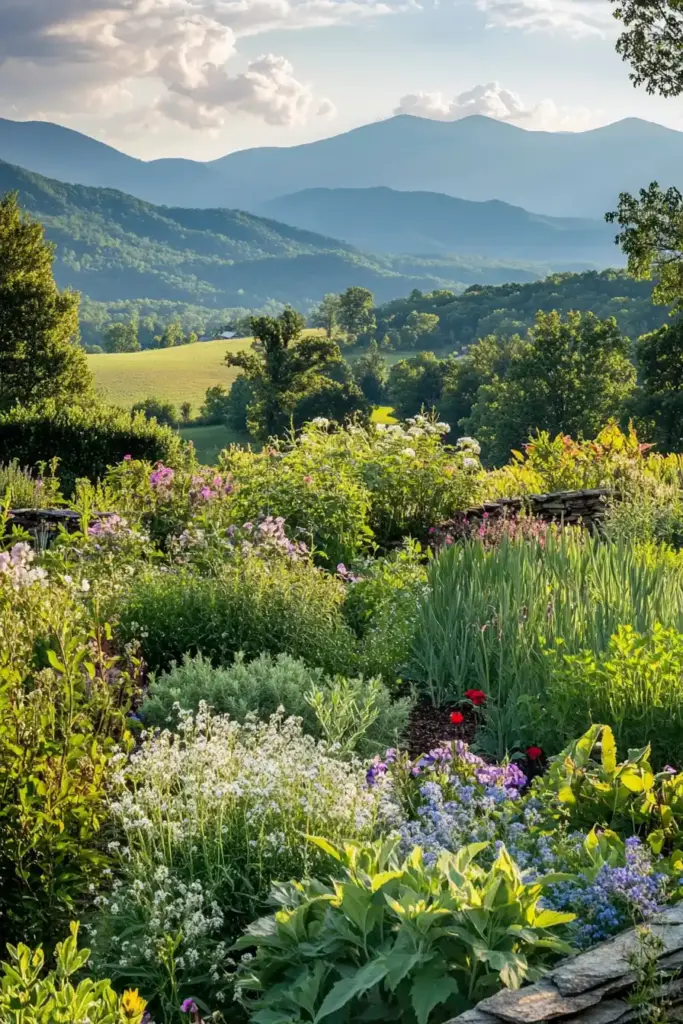
Why not make your steep hill landscaping both beautiful and bountiful? By integrating edible plants like herbs, berries, and compact vegetables, you can turn your slope into a productive garden that offers fresh, homegrown flavors right outside your door.
Slopes are ideal for growing many drought-tolerant culinary herbs like thyme, rosemary, and oregano, which thrive in well-drained soil and full sun. You can also plant strawberries along the lower sections or install blueberry bushes on terraces for a pop of color and sweet seasonal harvests.
Edible ideas for sloped gardens:
- Edge steps or terraces with rosemary, sage, or chives.
- Use vertical planters for lettuces or trailing cherry tomatoes.
- Plant berry bushes where they can double as ornamental shrubs.
Combining functionality with form, edible landscaping turns your hillside into a space that nourishes both body and soul—while adding lush texture and delightful aromas to your garden.
17. Install a Simple Irrigation System
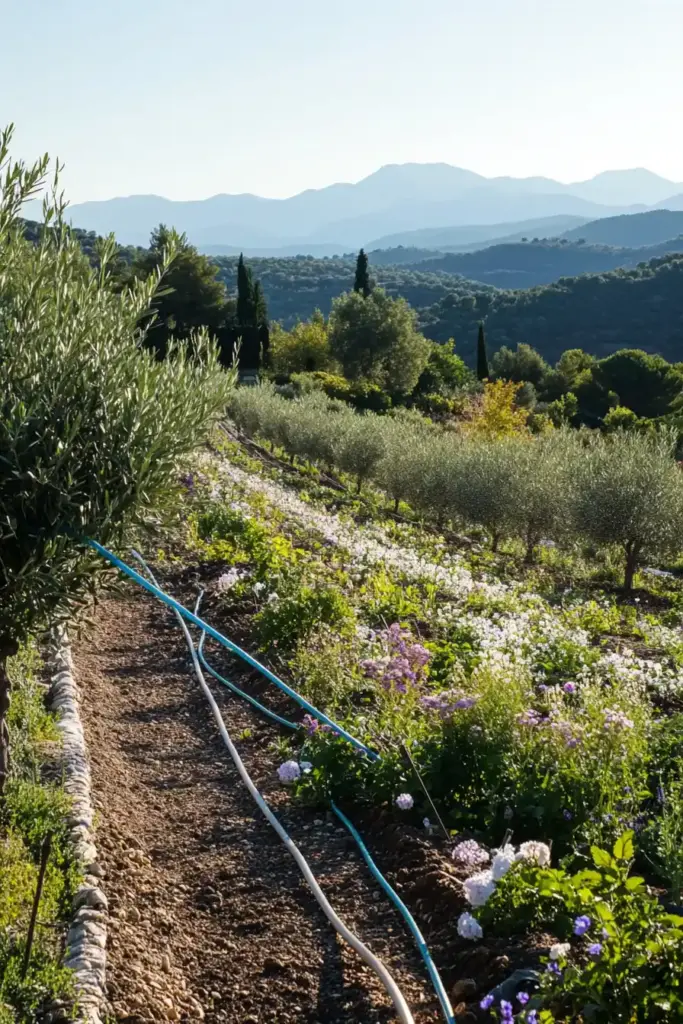
Watering a sloped garden can be tricky—but with a basic drip irrigation setup, you can efficiently hydrate your plants while conserving water. For steep hill landscaping, a well-planned irrigation system ensures your greenery thrives without constant manual effort or runoff.
Drip systems deliver water directly to plant roots, minimizing waste and preventing erosion. Pairing the system with an automatic timer means your hillside stays healthy even when you’re not around.
Irrigation tips for sloped gardens:
- Use pressure-compensating drip emitters to ensure even water flow across elevations.
- Run tubing along terraces or plant rows and secure it with landscape staples.
- Add a timer and moisture sensor for low-maintenance efficiency.
With the right irrigation in place, your hillside becomes a self-sustaining ecosystem—leaving you with more time to enjoy your garden and less time managing it.
Frequently Asked Questions (FAQ)
❓What is the best way to landscape a steep hill on a budget?
The best approach is to combine erosion control with visual appeal using cost-effective solutions like terracing with reclaimed wood, planting native groundcovers, and using mulch. DIY projects such as tire planters or simple gravel steps can drastically reduce costs while improving functionality.
❓How do I prevent erosion in steep hill landscaping?
To prevent erosion, focus on stabilizing the soil. Use terracing, retaining walls, mulch, and deep-rooted plants like ornamental grasses or native shrubs. Drip irrigation systems can also help by delivering water efficiently without causing runoff.
❓Can I grow vegetables on a steep hill?
Yes! Many herbs and compact vegetables thrive on slopes, especially when grown in terraced beds or raised planters. Choose drought-tolerant edibles like rosemary, thyme, strawberries, and blueberries for best results.
❓Do I need professional help for steep hill landscaping?
Not necessarily. While complex designs may benefit from professional input, many hillside landscaping ideas—like building pathways, installing planters, or layering plants—are DIY-friendly. Starting small and learning as you go can be a budget-friendly way to transform your slope.
❓What plants work best for steep slopes?
Ideal plants include:
- Groundcovers: Creeping thyme, sedum, ajuga
- Shrubs: Hydrangeas, spirea, native blueberries
- Grasses: Fountain grass, blue fescue, switchgrass
- Herbs: Oregano, rosemary, chives
Choose drought-resistant and native varieties for low-maintenance success.
Conclusion
Landscaping a steep hill might seem overwhelming at first, but with the right mix of creativity, smart planning, and budget-friendly landscaping ideas, your slope can become the most beautiful and functional part of your yard. From rustic woodwork and rock gardens to edible plants and serene water features, these ideas prove that steep hill landscaping doesn’t have to be costly or complicated.
By blending practicality with aesthetic value—while using low-maintenance plants and sustainable techniques—you can create a space that feels uniquely yours. Whether your goal is relaxation with a cozy outdoor nook, growing your own food, or boosting curb appeal, your hillside holds endless potential.

